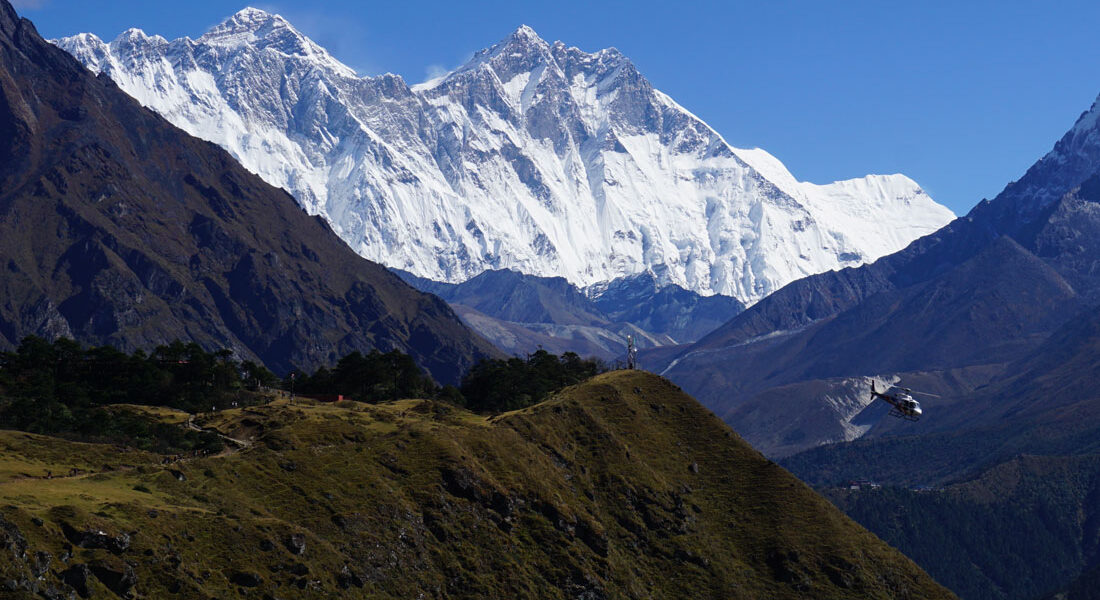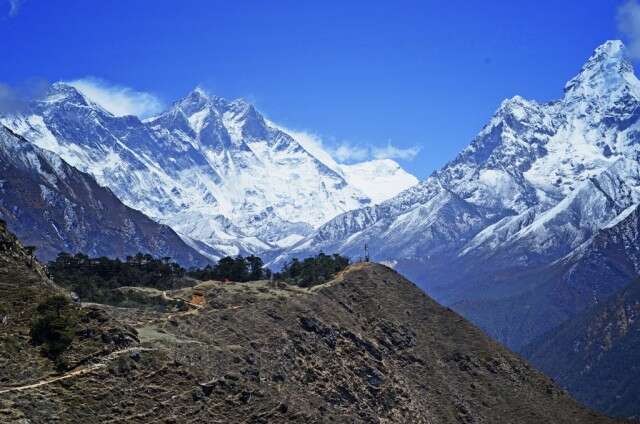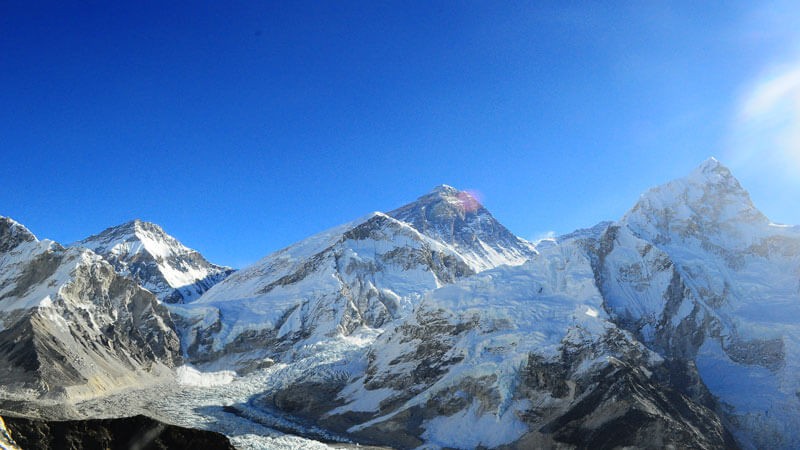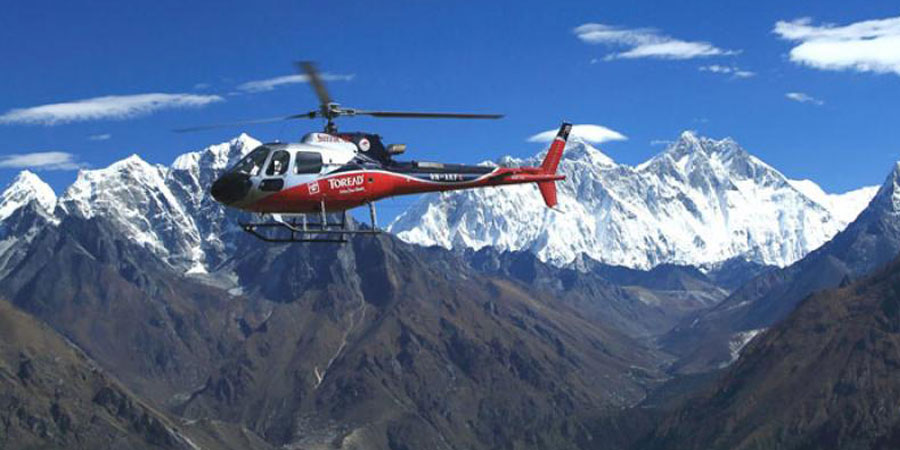Overview
The Everest Base Camp Trek is a popular trekking route in Nepal that takes you to the base camp of Mount Everest, the highest mountain in the world. The trek usually takes about 9 days to complete, depending on your pace and the route you take.
The trek starts in Lukla, a small town in the Solu-Khumbu region of Nepal, and follows the Dudh Koshi River towards Namche Bazaar, the main town in the region. From Namche, the trail continues to Tengboche, Dingboche, Lobuche, and finally to the Everest Base Camp, located at an altitude of 5,364 meters (17,598 feet).
Along the way, you will pass through charming Sherpa villages, forests of rhododendron and juniper, and stunning views of the Himalayan peaks, including Ama Dablam, Lhotse, and Nuptse.
The trek is considered moderate to challenging, as you will be walking for several hours each day on rugged terrain at high altitude.It is important to be in good physical condition and to acclimatize properly to the altitude. It is also important to be properly equipped with warm clothing, a sleeping bag, and other necessary gear.
Overall, the Everest Base Camp Trek is a truly unforgettable experience that offers a combination of physical challenge, cultural immersion, and breathtaking natural beauty.
Best Season for Everest Base Camp Trek
The best season for an Everest Base Camp trek depends on a few factors, including personal preference, the type of experience you are seeking, and the weather and conditions in the region.
Spring (March to May) and fall (September to November) are generally considered the best times to visit the Everest region. During these seasons, the weather is generally mild and stable, with clear blue skies and warm days. The spring season also offers the added benefit of seeing the rhododendrons in bloom, which adds to the beauty of the trek.
However, the fall season is typically the busiest time for trekking in the Everest region, as it coincides with the end of the monsoon season and the best weather conditions. This can lead to crowded trails and accommodations, so if you prefer a more solitary trekking experience, you may want to consider going in the spring or winter (December to February).
The winter season can also be a good time to visit the Everest region, although the weather can be very cold and dry, with temperatures often dropping well below freezing at higher elevations. Trekking during this time may require additional gear and preparation to stay warm and safe.
Ultimately, the best season for an Everest Base Camp trek will depend on your personal preferences and the type of experience you are seeking. It’s important to do your research and be prepared for the weather and conditions you may encounter during your trek.
Safety Measures to apply during Everest Base Camp Trek
- Get a thorough medical check-up before the trek: It is essential to get a medical check-up before embarking on the Everest Base Camp Trek as the high altitude can have serious health consequences.
- Use a reputable trekking company: Choose a reputable trekking company with experienced guides and a good track record of safety.
- Use proper equipment: Make sure to bring proper gear such as warm clothing, a good quality sleeping bag, and a reliable water purification system.
- Acclimatize properly: Allow your body time to adjust to the high altitude by taking proper rest days and staying hydrated.
- Follow your guide’s instructions: Your guide is trained to handle emergency situations and should be followed in case of any unforeseen circumstances.
- Know your limits: Do not push yourself beyond your physical abilities and listen to your body. If you feel sick or tired, take a rest.
- Stay hydrated: Dehydration can be a serious issue at high altitude, so make sure to drink plenty of water.
- Keep warm: The temperature can drop significantly at night, so it is essential to have warm clothing and a good quality sleeping bag.
- Stay on the trail: It is easy to get lost on the trails, so always stay on the designated path and follow your guide’s instructions.
- Have proper insurance coverage: Make sure you have proper insurance coverage for high altitude trekking in case of any emergencies.
Equipments to carry on Everest Base Camp 9 Days Trek
Here is a list of recommended equipment to bring on an Everest Base Camp Trek:
- A good-quality, waterproof and breathable jacket and pants.
- A fleece or synthetic mid-layer for warmth.
- A down jacket or other warm, insulated jacket for cold evenings and early mornings.
- Hiking boots or shoes with good grip and support, as well as a pair of sandals or flip-flops for wearing around camp.
- Socks and underwear, as well as a hat, gloves, and a scarf or neck gaiter for protection from the cold.
- A backpack with a capacity of at least 40 liters to carry your gear.
- A sleeping bag rated for cold temperatures, as well as a sleeping pad for insulation and comfort.
- A water bottle or hydration system, as well as a water purification system or tablets.
- Sunscreen, lip balm, and insect repellent to protect against the sun, wind, and bugs.
- Personal hygiene items such as a toothbrush, toothpaste, and hand sanitizer.
- A first aid kit with essential items like band-aids, painkillers, and blister treatment.
- A headlamp or flashlight with extra batteries.
- Snacks such as energy bars and trail mix to help you stay fueled during the trek.
- A camera or smartphone to document your journey.
- Cash in local currency to pay for meals, accommodations, and other incidentals.
It’s also a good idea to bring along some backup items in case of emergencies, such as a repair kit for your gear, a compass, and a map of the area. Make sure to pack all of your items in a sturdy, water-resistant bag to protect them from the elements.
Major Highlights of Everest Base Camp Trek
- Hiking to the base of the world's highest mountain, Mount Everest, at an elevation of 5,364 meters (17,598 feet)
- Visiting the Sagarmatha National Park, a UNESCO World Heritage Site
- Exploring the Sherpa culture and traditions in the Solu-Khumbu region
- Admiring the breathtaking views of the Himalayas, including peaks such as Lhotse, Nuptse, and Ama Dablam
- Trekking through diverse landscapes including forests, rivers, and glaciers
- Visiting the iconic Tengboche Monastery, the largest Tibetan Buddhist monastery in the Solu-Khumbu region
- Experiencing the high altitude challenges and acclimatizing to the thin air at higher elevations
- Making new friends with fellow trekkers from around the world
- Gaining a sense of accomplishment and personal growth through the physical and mental challenges of the trek.




